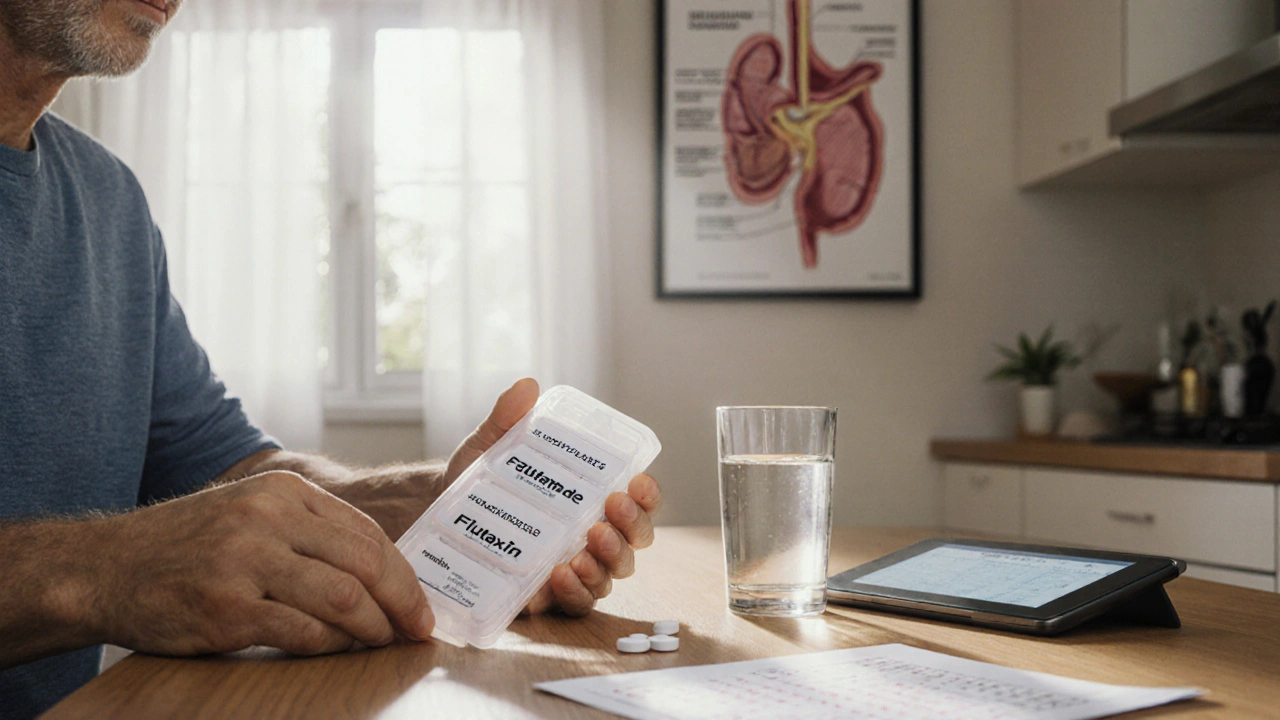Antiandrogen Drugs – A Practical Overview
When working with antiandrogen drugs, medications that block the effects of male hormones (androgens) in the body. Also known as antiandrogens, they are essential tools in treating hormone‑driven conditions. You'll also meet finasteride, a 5‑alpha‑reductase inhibitor used for hair loss and enlarged prostate and spironolactone, a potassium‑sparing diuretic that also blocks androgen receptors, commonly prescribed for acne and hirsutism. These drugs share the goal of lowering androgen activity, but they achieve it in different ways.
How Antiandrogen Drugs Work
The core idea is simple: reduce the signal that androgens send to cells. Some agents, like finasteride, stop the enzyme 5‑alpha‑reductase from converting testosterone into the more potent dihydrotestosterone (DHT). Others, such as spironolactone, sit on the androgen receptor and prevent DHT or testosterone from binding. By blocking the receptor directly, drugs like bicalutamide — a non‑steroidal antiandrogen often used in prostate cancer — halt the cascade that drives cell growth. This dual approach of enzyme inhibition and receptor blockade is why antiandrogen therapy can be tailored to specific conditions.
Understanding the biology helps you see why certain side effects appear. When you lower DHT, you may notice reduced facial hair growth, a softer scalp, or even a shift in sexual drive. The liver processes many antiandrogens through the CYP3A4 pathway, so drug‑drug interactions are a real concern. Monitoring liver enzymes and hormone levels is standard practice, especially when combining multiple agents.
Clinical applications are broad. In prostate cancer, antiandrogen drugs shrink tumors by starving them of the androgen signal they need to proliferate. For androgenic alopecia, finasteride cuts DHT levels in the scalp, slowing hair loss and sometimes promoting regrowth. Women with hirsutism or severe acne often turn to spironolactone because it tackles the root cause — excess androgen activity. Even gender‑affirming hormone therapy for trans women may include antiandrogens to lower testosterone before estrogen is added.
Side effects deserve attention. Gynecomastia (male breast tissue growth) can result from the hormonal imbalance created by antiandrogens, especially with agents that raise estrogen levels indirectly. Liver toxicity, though rare, is monitored via blood tests. Sexual dysfunction, mood changes, and fatigue are reported, so clinicians usually start with low doses and adjust based on response.
Drug classes matter, too. Steroidal antiandrogens like cyproterone acetate act like hormones and can have broader hormonal effects. Non‑steroidal options — bicalutamide, flutamide, enzalutamide — tend to be more selective, offering stronger androgen receptor blockade with fewer off‑target actions. Choosing the right drug often depends on the condition being treated, patient age, and other medications they’re taking.
At StrapCart Pharmaceuticals we aim to give you clear, actionable info. Below you’ll find a mix of articles that dive deeper into related topics: from buying cheap generic medications safely, to managing side effects of blood‑pressure drugs, to navigating supplements that support hormone health. Whether you’re exploring treatment options for prostate issues, looking for the best hair‑loss solution, or simply want to understand how antiandrogens fit into a broader health plan, our curated collection has you covered. Keep reading to find the specifics you need for informed decisions.
Flutamide (Eulexin) vs. Other Antiandrogens: 2025 Comparison Guide
Compare Flutamide (Eulexin) with top antiandrogen alternatives, covering mechanisms, dosing, side effects, costs, and how to pick the right option for prostate cancer treatment.
read more

